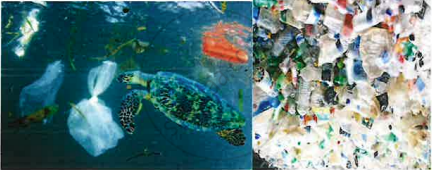Topics
Caring for Our Basic Resources
Caring for Our Soil
- Caring for Our Soil
- Soil Erosion
- Causes of Soil Erosion
- Effects of Soil Pollution
- Soil Management
- Soil Conservation
- Soil Conservation Strategies
- Auroville
- Case of Tarun Bharat Sangh
Resource Use
Fuel Wood Crisis
- Fuel Wood Crisis
- Wood Fuel
- Alternatives to Fuel Wood
- Alternatives to Timber
- Deforestation and Its Causes
- Combating Deforestation
- Community Forestry
- Joint Forest Management (JFM)
- Social Forestry
- Agro Forestry
- Barriers to Community Forestry
Waste Generation and Treatment
- Waste
- Classification of Wastes
- Biodegradable Waste
- Non-Biodegradable Wastes
- Sources of Origin
- Impact of Waste Accmulation
- Treatment of Wastes
- Treatment of Waste Water
- Activated Sludge Process
- End of the Pipe Treatment (Eop)
- Basel Convention
Appropriate Eco Friendly Technologies
Caring for Our Air
- Air Pollution and Its Causes
- Suspended Particulate Matter (SPM) Control
- Fluidized Bed Combustion (Fbc)
- Strategies to Reduce Air Pollution
- Economic Policy Measures to Control Motor Vehicle Air Pollution
- Bubble Theory
- Technical Methods to Control Air Pollution
- Traffic Management as Measure to Control Air Pollution
- Curitiba, Brazil
Initiatives I Can Take
Legislation as a Means to Reduce Air Pollution
- Legislation as a Means to Reduce Air Pollution
- The Taj Trapezium
- Delhi City Model
- Legislative Control of Air Pollution: Euro Norms
- WHO Norms for Air Pollution
- Bharat Norms of Air Pollution
- Remote Sensing Sattelite
- Uses and Application of Remote Sensing
Caring for Our Water
- Need to Conserve Water
- Watershed
- Integrated Watershed Management
- Indigenous Methods of Water Harvesting
- Eris System of Tamil Nadu
- Rajasthan's Traditional Systems
- Modern Methods of Rainwater Harvesting
- Small Dams Vs Large Dams
- Mini Hydel
- Micro Hydro
- Run of a River
- Check Dams
- Waste Water Recycling
- Dry Composting Toilet
- Case Study - Using Night Soil in Tai Lake Region in China
- What Are Wetlands?
- Ramsar Convention
Impact of Globalisation on Environment
- Natural Resources
- Impact of Globalization on Environment
- Impact of Globalization on Developing Countries
- Negative Impacts of Globalization
- Impact of Globalization on Human Resource
- Effect of Globalization on Natural Resources
- Globalization Index
Role of NGOs in Sustaining Environment
- Role of NGOs in Sustaining Environment
- NGOs for Environmental Protection
- WWF - World Wide Fund for Nature.
- NGOs for Women Rights
- Some Important NGOs (International, National and Local}
Evolving a Sustainable Growth Paradigm
- Sustainability
- Objectives of Sustainable Development
- Principles of Sustainability on Equity
- Characteristics Principles of Sustainability
- Gandhi - Large Scale Development Vs. Village Community Based Self Sufficient Growth.
- Panchayati Raj System
- Auroville
- Gandhigram
- Dastkar
- Khadi
North- South Divide
- North - South Divide
- GDP vs. Growth Paradox
Eco Friendly Technologies
- Indigenous Technology
- Modern Fishing Techniques
- Analasys of Power Sector
- Conventional Sources of Energy
- Clean Technologies
- Alternative Energy
- Ecofriendly Technologies
- Biogas Plant
- Solar Energy
- Wind Energy
- Developing Least Cost Options - EIA
- Natural Resource Accounting
- Depletion Calculation
Initiatives I Can Take
- Initiatives to Be Taken at Local Level
- Setting Personal Goals
- Energy Efficiency and Conservation
- For Business Or Work Place
- Introduction
- Disposal and Management
Introduction:
Non-biodegradable waste consists of materials that cannot be decomposed or degraded by natural processes. These substances remain in the environment for years, contributing to pollution. For example, plastics, metals, and other materials.
Characteristics of non-biodegradable waste:
- Extremely resistant to natural degradation processes.
- Can persist in the environment for hundreds or thousands of years.
- They are often made from synthetic or processed materials.
- Also known as "dry solid waste" or "dry garbage" because of its lack of moisture content.
Environmental Impact:
- Leads to soil, water, and air pollution when improperly disposed of.
- Causes harm to animals that ingest or get entangled in waste materials like plastics.
- Production of non-biodegradable items often consumes significant natural resources.
- Accumulation in landfills contributes to environmental degradation.
- Not all non-biodegradable items can be recycled due to technical or economic constraints.
- Requires proper separation from biodegradable waste for effective disposal.
Disposal and Management:
- Recycling: Materials like plastic, metals, and glass are processed and reformed into new products, reducing waste accumulation.
- Reusing: Items such as containers, bottles, and packaging can be repurposed, extending their lifecycle and reducing the need for new materials.
- Energy Recovery: Certain types of waste can be burnt in waste-to-energy plants, converting them into electricity or heat, minimising environmental impact.
- Safe Landfill Disposal: Properly engineered landfills with containment systems can store non-biodegradable waste safely, preventing soil and water contamination.
- Chemical Treatment: Some materials, like certain plastics or synthetic rubbers, can undergo chemical processes to break down into less harmful substances.
- Pyrolysis and Gasification: High-temperature techniques can convert waste, like plastics, into useful byproducts like oil or gas without burning.
- Upcycling: Creative transformation of waste materials into higher-value products (e.g., using tires for furniture or decor).
- Hazardous Waste Facilities: E-waste and other hazardous materials are disposed of in specialised facilities to ensure environmental and health safety.
If you would like to contribute notes or other learning material, please submit them using the button below.

